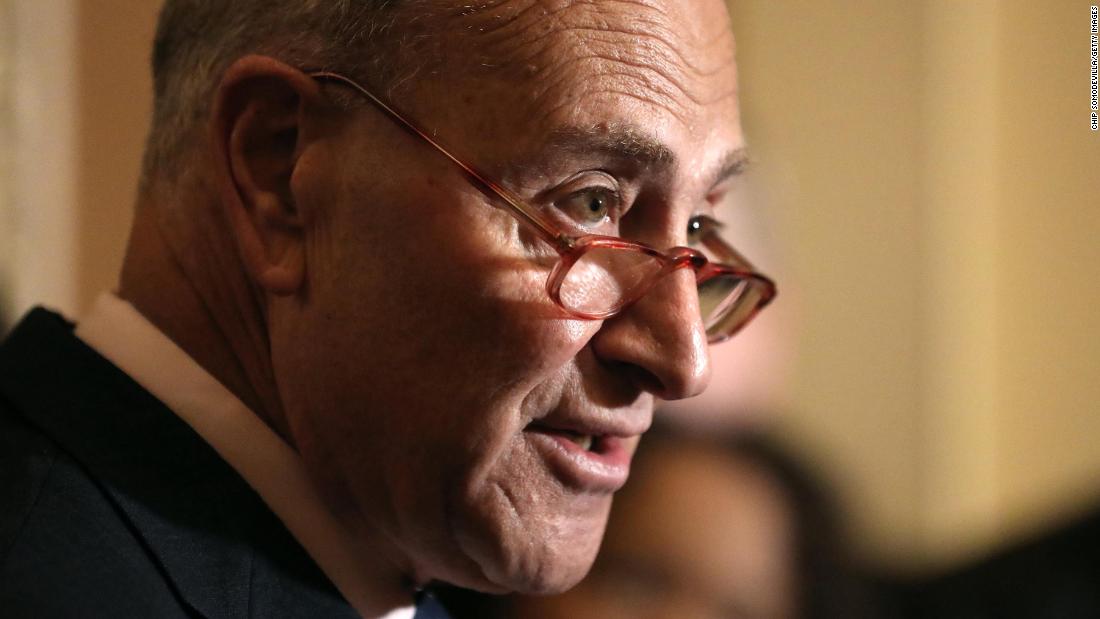

The package is the product of painstaking negotiations and will give Democrats a chance to achieve major policy objectives ahead of the upcoming midterm elections. Senate Democrats are using a special process to pass the package without Republican votes.
What happens next
Republicans are using the “vote-a-rama” to put Democrats on the spot and force politically tough votes, and votes on contentious policy issues are expected.
As expected, key insulin provisions were struck out of the bill after Republicans raised a point of order, resulting in a vote to strip them out.
The final vote was 57-43. A 60-vote threshold was needed to keep the provision in place.
The provisions initially included in the bill would have limited insulin prices to $35 per month in both the private insurance market as well as through Medicare. But the Senate parliamentarian ruled that the cap on insulin in the private insurance market was not compliant with the reconciliation rules Democrats are utilizing to push their legislation through the chamber.
Democrats kept both provisions in the bill anyway, but Republicans raised a point of order to force a vote to strike the provisions only from the private marketplace. The Medicare $35 insulin cap remains in place.
The House is poised to come back to take up the legislation on Friday, August 12, according to House Majority Leader Steny Hoyer’s office.
How Democrats plan to pass the sweeping legislation
In order to pass a bill through the reconciliation process, however, the package must comply with a strict set of budget rules.
The Senate parliamentarian has to decide whether the provisions in the bill meet the rules to allow Democrats to use the filibuster-proof budget process to pass the legislation along straight party lines.
Senate Majority Leader Chuck Schumer announced Saturday that after undergoing the parliamentarian’s review, the bill “remains largely intact.”
“The bill, when passed, will meet all of our goals — fighting climate change, lowering health care costs, closing tax loopholes abused by the wealthy and reducing the deficit,” the New York Democrat said.
In a key ruling, the parliamentarian, Elizabeth MacDonough, allowed a major component of the Democrats’ prescription drug pricing plans to move ahead — giving Medicare the power to negotiate the prices of certain prescription drugs for the first time.
But MacDonough narrowed another provision aimed at lowering drug prices — imposing penalties on drug companies if they increase their prices faster than inflation. Democrats had wanted the measure to apply both to Medicare and the private insurance market. But the parliamentarian ruled the inflation cap could only apply to Medicare, a Democratic aide said.
Meanwhile, MacDonough ruled to keep intact several climate measures from the Environment and Public Works Committee in the reconciliation bill, including a methane fee that would apply to oil and gas producers leaking the potent greenhouse gas methane above a certain threshold.
Earlier Saturday, Senate Finance Chair Ron Wyden of Oregon announced that the clean energy tax portion of the bill “adheres to Senate rules, and important provisions to ensure our clean energy future is built in America have been approved by the parliamentarian.”
How the bill addresses the climate crisis
For a party that failed to pass major climate legislation over 10 years ago, the reconciliation bill represents a major, long-fought victory for Democrats.
The nearly $370 billion clean energy and climate package is the largest climate investment in US history, and the biggest victory for the environmental movement since the landmark Clean Air Act. It also comes at a critical time; this summer has seen punishing heat waves and deadly floods across the country, which scientists say are both linked to a warming planet.
Analysis from Schumer’s office — as well as multiple independent analyses — suggests the measures would reduce US carbon emissions by up to 40% by 2030. Strong climate regulations from the Biden administration and action from states would be needed to get to Biden’s goal of cutting emissions 50% by 2030.
The bill also contains many tax incentives meant to bring down the cost of electricity with more renewables, and spur more American consumers to switch to electricity to power their homes and vehicles.
Lawmakers said the bill represents a monumental victory and is also just the start of what’s needed to combat the climate crisis.
“This isn’t about the laws of politics, this is about the laws of physics,” Democratic Sen. Brian Schatz of Hawaii told CNN. “We all knew coming into this effort that we had to do what the science tells us what we need to do.”
Key health care and tax policy in the bill
The bill would empower Medicare to negotiate prices of certain costly medications administered in doctors’ offices or purchased at the pharmacy. The Health and Human Services secretary would negotiate the prices of 10 drugs in 2026, and another 15 drugs in 2027 and again in 2028. The number would rise to 20 drugs a year for 2029 and beyond.
This controversial provision is far more limited than the one House Democratic leaders have backed in the past. But it would open the door to fulfilling a longstanding party goal of allowing Medicare to use its heft to lower drug costs.
Democrats are also planning to extend the enhanced federal premium subsidies for Obamacare coverage through 2025, a year later than lawmakers recently discussed. That way they wouldn’t expire just after the 2024 presidential election.
To boost revenue, the bill would impose a 15% minimum tax on the income large corporations report to shareholders, known as book income, as opposed to the Internal Revenue Service. The measure, which would raise $258 billion over a decade, would apply to companies with profits over $1 billion.
Concerned about how this provision would affect certain businesses, particularly manufacturers, Sinema has suggested that she won changes to the Democrats’ plan to pare back how companies can deduct depreciated assets from their taxes. The details remain unclear.
However, Sinema nixed her party’s effort to tighten the carried interest loophole, which allows investment managers to treat much of their compensation as capital gains and pay a 20% long-term capital gains tax rate instead of income tax rates of up to 37%.
The provision would have lengthened the amount of time investment managers’ profit interest must be held from three years to five years to take advantage of the lower tax rate. Addressing this loophole, which would have raised $14 billion over a decade, had been a longtime goal of congressional Democrats.
In its place, a 1% excise tax on companies’ stock buybacks was added, raising another $74 billion, according to a Democratic aide.
This story and headline have been updated with additional developments.
CNN’s Jessica Dean, Manu Raju, Ella Nilsen, Tami Luhby, Katie Lobosco, Morgan Rimmer, Melanie Zanona and Kristin Wilson contributed to this report.
